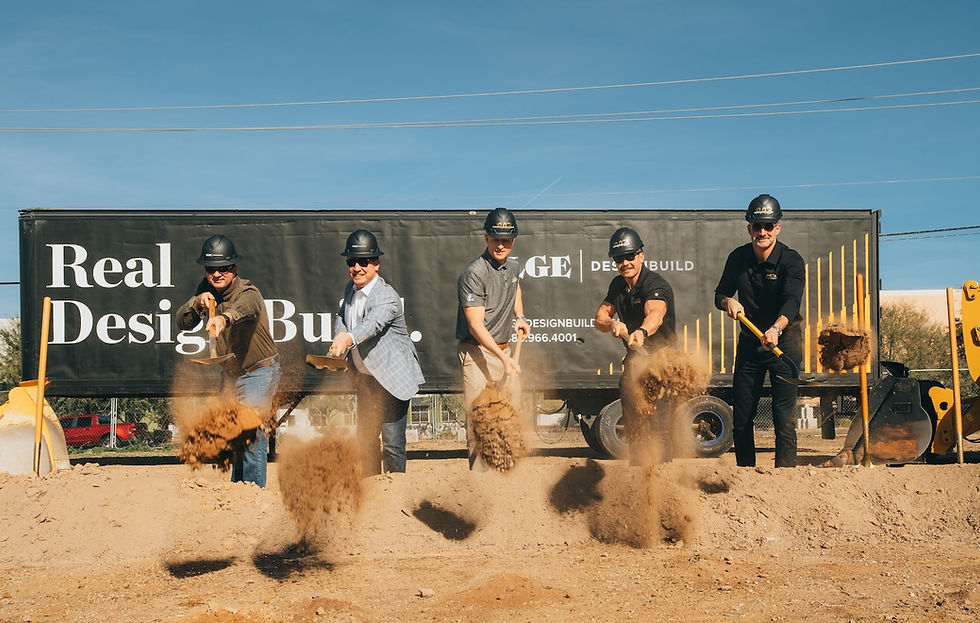Here Comes the Rabbit! - The “Hare-y” Story of Greyhound Racing in Arizona
- Jay Mark
- Apr 30, 2020
- 3 min read
“Here comes the rabbit, rabbit, rabbit!”
Seldom have six simple words so quickly got the heart-pounding and adrenaline pumping. Cheering and wagering on greyhounds bursting from the starting box on their chase of a mechanical lure, as it is officially called, was a significant industry in Arizona for more than 70 years.

In its heyday, in the era before lotteries and local Native American casinos, thousands regularly flocked to racetracks, hoping to beat the odds and make their fortune. After all, it was once the nation's sixth most popular pastime and often regally dubbed the "Sport of Queens," which referred to Elizabeth I's 16th-century passion for greyhound racing. The sport only took a back seat to horse racing, the "Sport of Kings."
Although greyhound racing is an ancient sport, it didn’t arrive in the U.S. in 1919, when Owen Patrick Smith opened the nation’s first track in Emeryville, California. The not-yet-legal operation debuted a mechanical lure, considered more humane than the previous use of live animals. Within a decade, and not deterred by its illegality, more than 60 tracks had opened across the country. Not until 1931 when Florida legalized it, did greyhound racing reach legitimacy.
In 1939, four years after the state adopted pari-mutuel wagering, Arizona followed Oregon and Massachusetts to became just the fourth state to officially sanction dog racing. The sport was an unexpected source of revenue during the cash-strapped Great Depression.
Greyhounds began competing two years before legalization, giving "Salt River Valley residents…another sport to which to turn for amusement—and try their luck," according to The Arizona Republic. Those races were conducted under the aegis of the local Disabled American Veterans Post, on the refurbished site of a former midget auto-racing track at 16th Street and Camelback Road. Ironically, not wanting to lose out on this new tax, Arizona sanctioned pari-mutuel wagering under the supervision of the State Tax Commission.

During these early years of greyhound races, many locations were used. The 1939-1940 seasons began with runs, overseen by the Arizona Greyhound Racing Association, conducted “on a special track installed at the State Fairgrounds.”
In 1941, the Arizona Kennel Club began leasing the four-year-old Phoenix Municipal Stadium south of downtown at Central Avenue and Mohave Street. There, the club constructed "one of the fastest and sportiest greyhound tracks in the country."
Not to be outdone, the Western Greyhound Kennel Club converted a midget automobile-racing oval to a 3/16-mile dog track near 17th Avenue and Roosevelt Street.
The Western Kennel Club began promoting races in 1943. Even amid World War II, the fledgling industry proved to be profitable. Despite significant problems including weather cancellations and failures of the mechanical lures, racing in the Valley flourished at several locations.
“For the second straight night a mutual ‘handle’ record was set when the fans poured $31,503 through the betting windows,” reported the Republic in October 1943. “Not only was the sum a one-night record for the current meet, it also was an all-time high for greyhound racing in Phoenix.” Of the wagers, 4 percent went to the state, 9 percent to the track, and the remainder was split between the public and dog owners’ winnings.
In 1947, a planned move by the Arizona Kennel Club to a new park on 20 acres at 34th Street and Washington was hindered by material restrictions left over from the war. This shortage caused only the “racing plant” to be completed. Fans sat in steel bleachers while awaiting “a grandstand to seat 10,000 or more and costing from $50,000 to $75,000…just as soon as the government curb is lifted.” However, this was the first Valley track to employ the “Universal Magic Eye” timing device, which eliminated the need for officials to use stopwatches.
This article originally appeared in the bimonthly Arizona Contractor & Community magazine, Mar/Apr 2020 issue, Vol. 9, No.2.







Comments